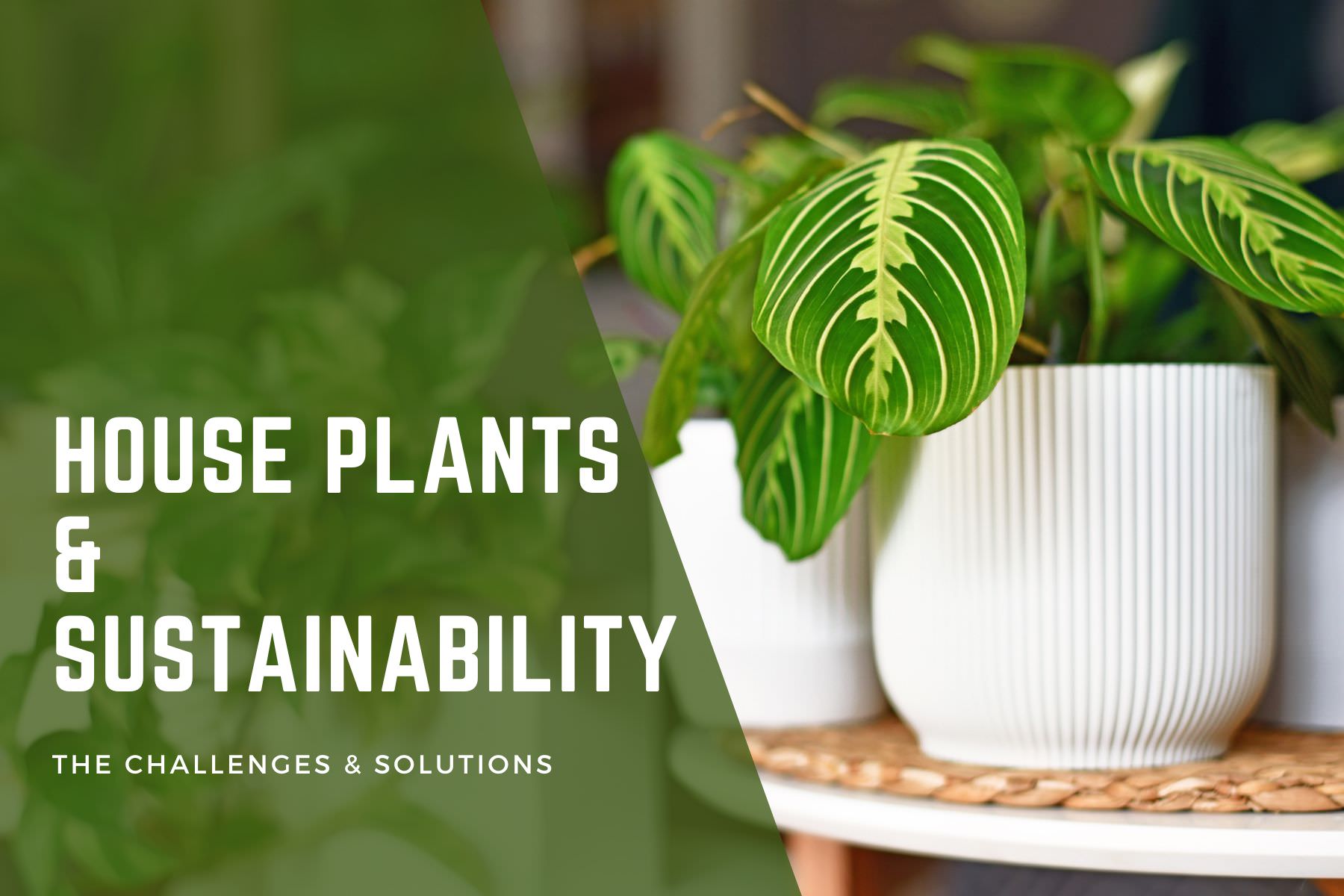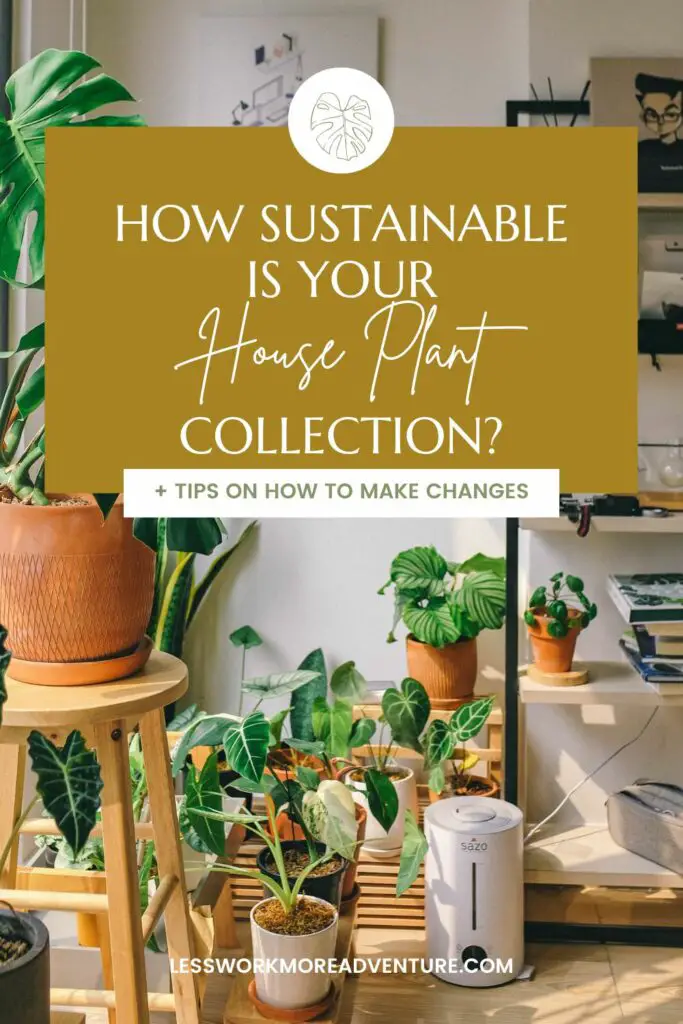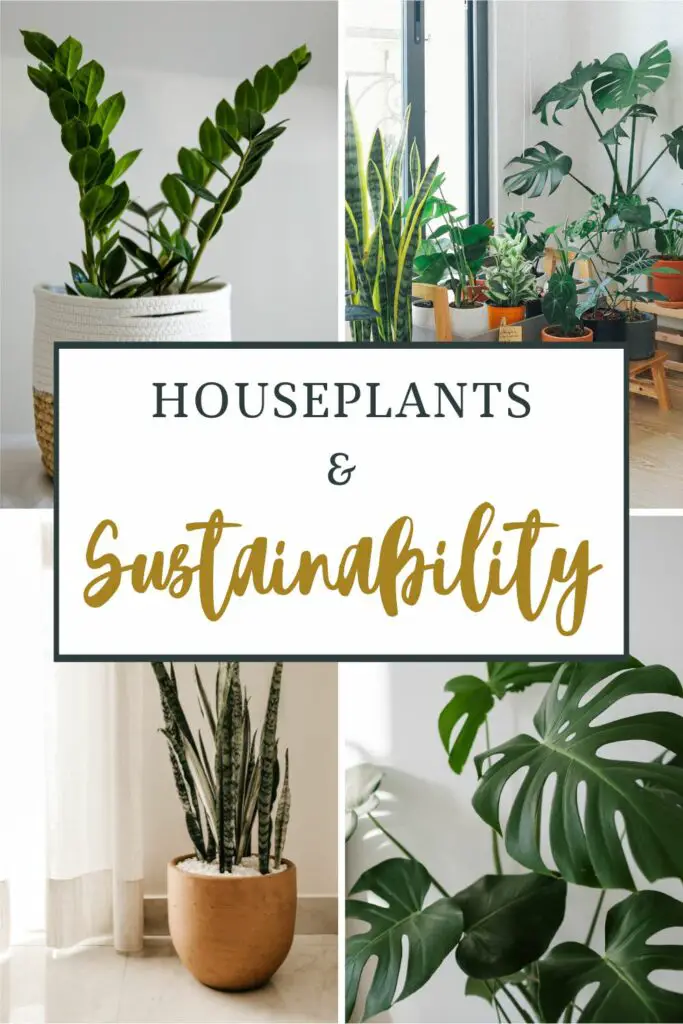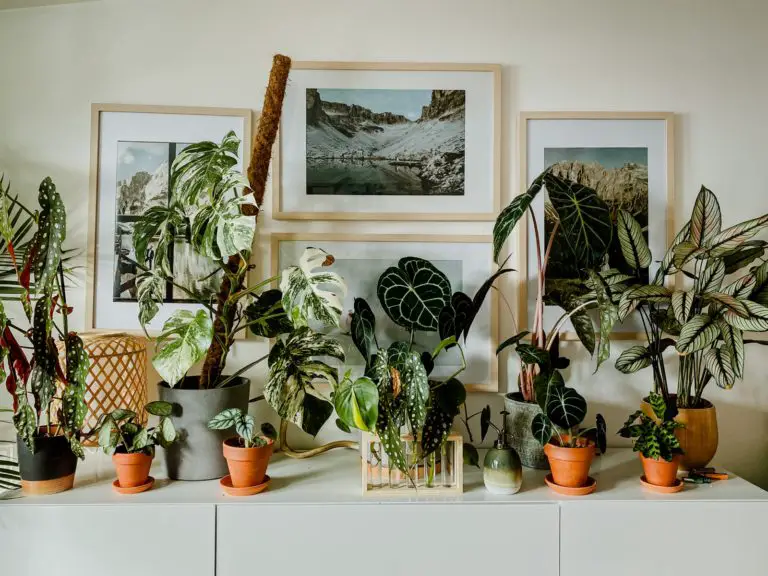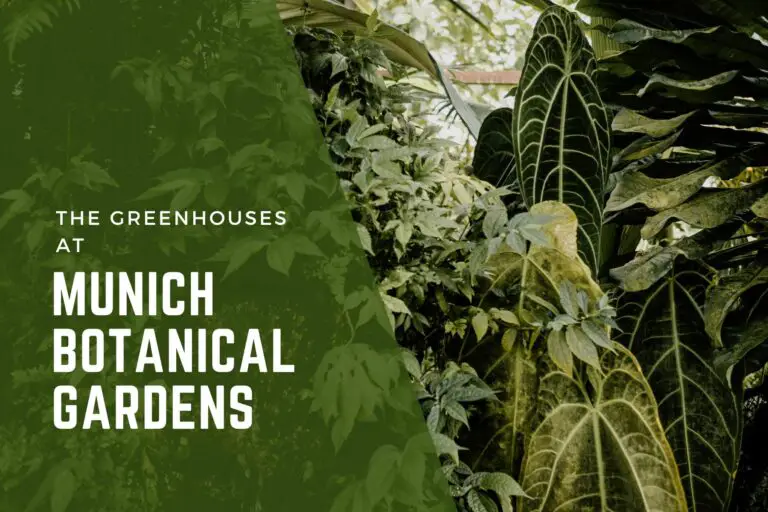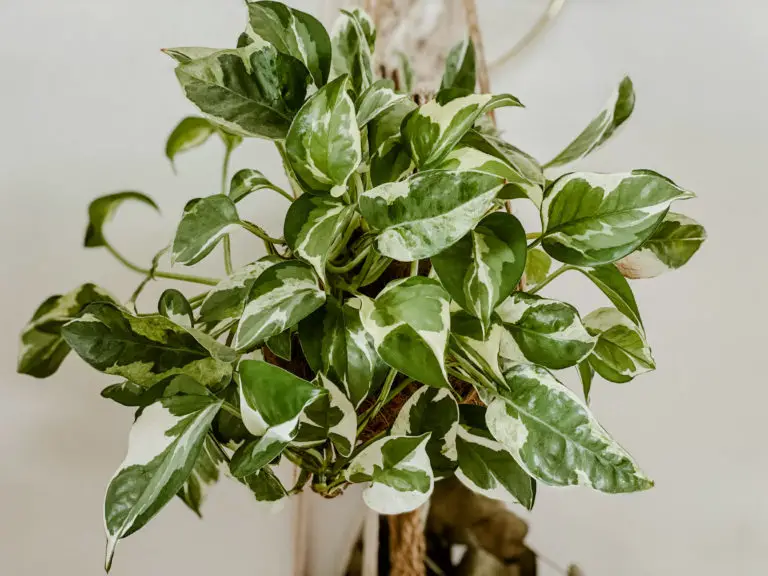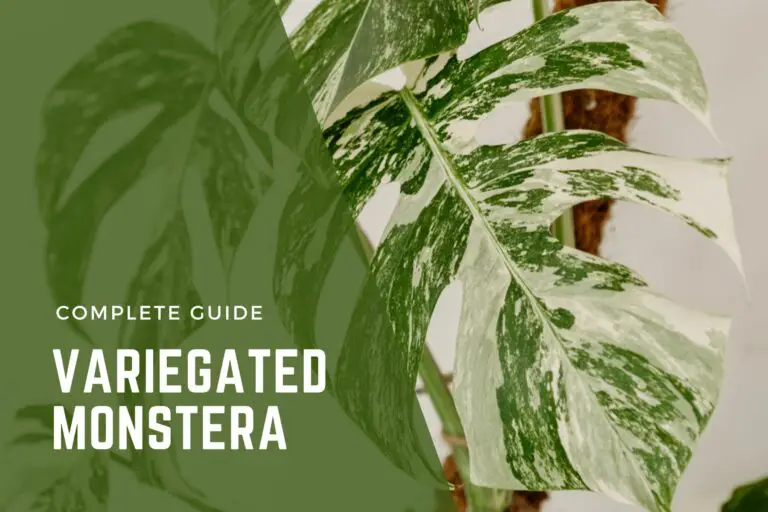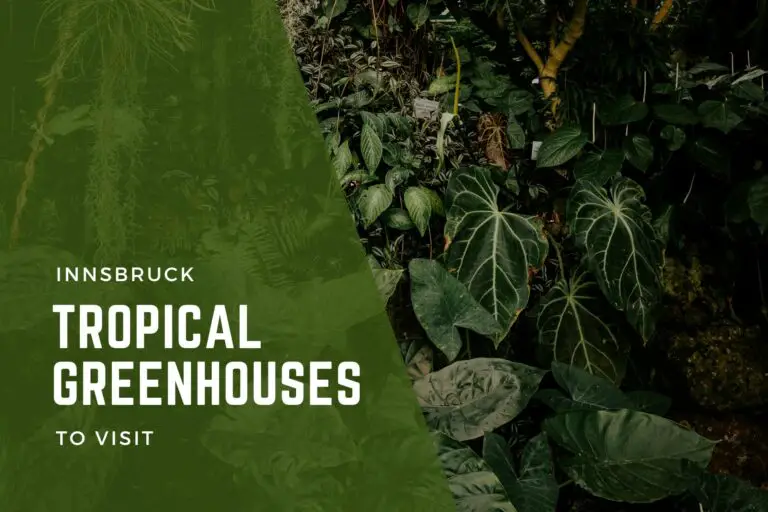How Sustainable Are Houseplants? Greener Tips & Alternatives
Disclosure: This post may contain affiliate links, meaning I earn a small commission if you decide to make a purchase though my links, at no additional cost to you, which I’ll probably spend on more outdoor gear and travel to cool places.
Table of Contents
You probably love houseplants because you love nature. But how sustainable are houseplants? This question has been a topic of discussion among plant lovers and environmentalists alike. In this blog post, we’ll examine the sustainability of houseplants from a variety of perspectives, including plant miles and their effect on carbon emissions, alternatives to plastic pots and peat-based potting mixes, and sustainable tips for keeping your indoor plants healthy while reducing their environmental impact.
As you continue reading, you’ll discover not only how sustainable houseplants can be when managed responsibly but also learn practical advice for making eco-conscious choices in your own home garden. Let’s embark on this journey toward greener living together!
Understanding the Impact of Houseplants on the Environment
With the growing trend of bringing nature into homes, houseplants have become a popular choice; however, it is important to consider the environmental impact of bringing tropical plants into a household environment.
While these plants can be a great addition to any space, it’s important to understand the environmental impact of growing, importing, and maintaining them. From responsible sourcing to plant care at home, there are several factors that need to be taken into consideration when buying and caring for houseplants sustainably.
Growing houseplants sustainably can help protect our planet’s fragile ecosystems but also promotes healthier living spaces. Plants naturally act as air and water purifiers, improving indoor air quality and reducing levels of dust and allergens in rooms where we spend most of our time – resulting in fewer respiratory issues over time. It is truly a win-win situation; taking care of them responsibly means less waste ending up in landfills for everyone to enjoy.
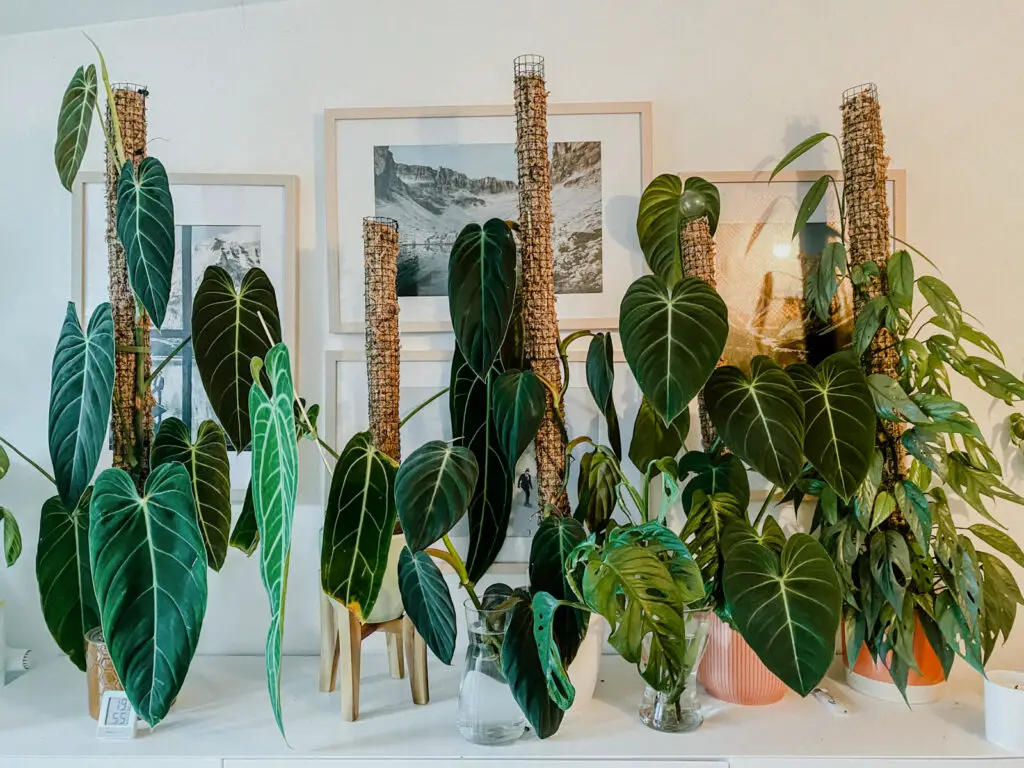
Sustainability Challenges With Houseplants
Plant Miles – A Plant’s Biggest Footprint
The environmental cost of plant miles is often overlooked when buying houseplants or other greenery. Plant journeys, or “plant miles,” refer to the total distance a plant moves from its birthplace to its ultimate destination. This can include transportation by air, sea, and land. Plant miles have an impact on the environment due to emissions from shipping and transport vehicles. In addition, plants that travel long distances require more packaging materials for protection during transit, leading to increased waste production.
What can you do?
- Swap or buy cuttings from other local plant collectors
- Purchase from local small businesses
- Buy from growers who are using sustainable practices
- Don’t be too focused on buying everything on your plant “wishlist”
- Rehab sad plants from the clearance bin and save them from getting thrown out
Plant Poaching
When buying rare houseplants, another thing you need to have an awareness of is plant poaching.
Plant poaching refers to the illegal harvesting, transportation, and trade of rare, endangered, or otherwise protected plant species. Poaching can occur for a variety of reasons, including collecting specimens for scientific or medicinal purposes, for personal collections, or for sale in the black market for ornamental, horticultural, or medicinal uses. Plant poaching is a serious threat to global biodiversity, as it can lead to the extinction of rare and endangered plant species and disrupt natural ecosystems. It is often driven by high demand for rare or exotic plant species, and is facilitated by the lack of regulation and enforcement in many parts of the world. While many countries have laws and regulations in place to protect endangered plant species, enforcement of these laws can be challenging due to limited resources and corruption.
However, plant poaching can also occur in cultivation, where collectors may illegally obtain or propagate rare and protected plant species for sale in the horticultural trade. This can involve stealing cuttings or seeds from botanical gardens, arboreta, or private collections, or illegally collecting plants from the wild to be cultivated in gardens or greenhouses.
In addition, there are instances of plant poaching from protected areas, such as national parks or reserves, where collectors may illegally remove rare and protected plants for sale in the horticultural or medicinal markets.
Therefore, it is important to be aware that plant poaching can occur both in the wild and in cultivation and take steps to avoid buying or supporting the trade of illegally obtained plants.
When buying rare houseplants, it’s important to make sure that you’re not inadvertently supporting plant poaching. Here are some tips to help you make sure you’re buying plants that haven’t been poached:
- Do your research: Before buying a rare houseplant, research the species to determine if it’s endangered or protected. Check if the plant is listed on the Convention on International Trade in Endangered Species (CITES) or other international conservation lists.
- Buy from reputable sources: Buy your plants from reputable nurseries or garden centers that follow ethical and sustainable practices. Look for businesses that grow their own plants or source from reputable growers who can provide information about where and how the plants were grown.
- Ask questions: Ask the seller questions about the plant’s origin and how it was obtained. If the seller cannot provide clear information, it may be a red flag that the plant was poached.
- Avoid buying from online marketplaces: Be cautious when buying plants from online marketplaces, as it’s difficult to verify the source of the plants. Consider buying from sellers who have positive reviews and have been verified by the marketplace.
- Report suspected plant poaching: If you suspect that a plant you’re interested in buying has been poached, report it to the appropriate authorities, such as the local conservation department or wildlife crime hotline.
By taking these steps, you can help ensure that you’re buying rare houseplants that have been ethically sourced and help support conservation efforts to protect endangered plant species.
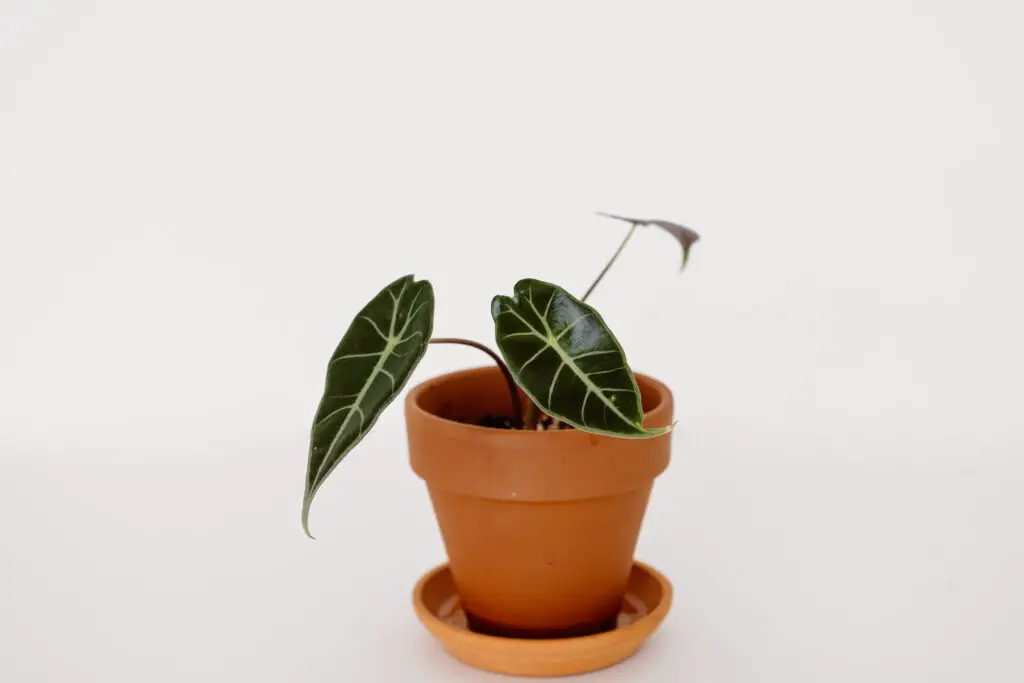
Plastic Pots
Almost any time you purchase a new plant, it comes in a plastic “nursery” pot. While plants may be kept in these pots for some time, at some point during their life, they will be re-potted, and these plastic pots are no longer needed.
What can you do?
If you are using plastic inner pots, then reusing them as much as possible at least means they don’t become single-use plastics. And if they do become damaged, then make sure to take them to the recycling.
One of the most popular replacements for inner plastic pots is terracotta or ceramic pots. They’re durable, reusable, and don’t contain any toxins or chemicals as some plastics do. The downside is that they can be heavy when filled with soil, so you may need to use smaller containers if your plants require frequent repotting. You’ll also need to purchase water trays for underneath terracotta pots, as water drains out of the holes underneath.
Some garden centers are replacing plastic pots with biodegradable pots made from natural fibers such as jute, coir (coconut fiber), or even bamboo. While these can be great for getting your plants home, they aren’t always a long-term solution for your plants.
For those looking for something truly unique, upcycled planters offer a creative way to reuse old items like cans, jars, bottles—even shoes. Upcycling not only helps reduce waste but it also gives your home decor a fun twist while helping save money on purchasing new items altogether.
For outer pots, consider buying second-hand pots, as second-hand if you can. Look around at thrift stores, flea markets, or local buy-and-sell groups.
If you are buying new pots, look for pots made out of natural materials like clay, or out of recycled plastic.
At long last, self-watering systems are a wonderful way to maintain plant health while also saving on water usage – an advantageous outcome for all. Self-watering systems typically involve filling a reservoir with water that slowly releases into the soil over time, ensuring consistent hydration levels without having to worry about over-watering or forgetting altogether. My favorite self-watering inner pots are from the brand Elho, who use recycled plastic and renewable energy to make their pots.
Soil Choice
When it comes to sustainable houseplant care, soil is an important factor. Peat moss, usually a component of the conventional potting mix, is an unsustainable resource with a large ecological footprint.
Another popular component in many people’s houseplant soil mix is perlite. As non-renewable resources, however, both perlite and vermiculite are not only finite resources, but the processing of them is also an energy-intensive process requiring high heat.
Fortunately, there are options that can help lessen the ecological impact of houseplant care while still keeping your greenery in good condition.
More Sustainable Soil Choices
One of the most popular alternatives to peat-based soils is coir or coconut fiber. Coir is made from the husks of coconuts and offers excellent drainage as well as aeration for roots. It also helps retain moisture in the soil without becoming waterlogged or compacted over time. Plus, coir doesn’t contain any harmful chemicals like some other soils do so you don’t have to worry about toxins leaching into your plant’s roots.
Finally, if you are looking for a pre-made potting mix, then you could consider Rosy Soil which is a carbon-negative indoor potting mix.
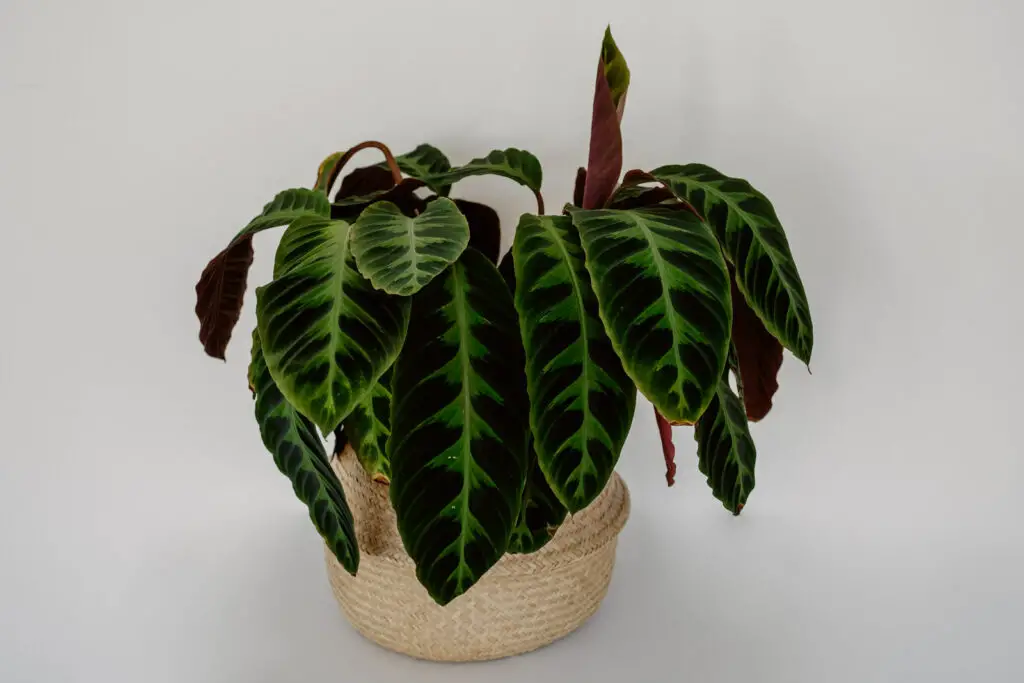
House Plant Care
Caring for houseplants sustainably is also an important part of preserving our environment. Small modifications in how we look after our plants can have a considerable effect on the planet. To reduce your environmental impact, here are some ideas to help you care for houseplants more sustainably.
Pest Control
Pests are the bain of every plant owner’s life. But before you unleash harsh and toxic chemicals on your houseplants, consider some alternatives that are kinder to the planet.
One option is to introduce beneficial insects. These are small predatory insects that feed on pests. Depending on what your plants are infested with will depend on the type of predatory insect that you’ll need. These can be a great option for biological pest control, however, there are two main reasons people don’t go for this as an option. Firstly, it’s very expensive, as most of the time you’ll need to get new bugs every 3-4 weeks. And secondly, not everyone is keen on releasing lots of bugs in their home (even if they are only tiny and will hang out on your plants)
If you’re not to taken by the idea of “good bugs” to eat the “bad bugs” then consider using neem oil and Castile soap as a non-toxic, DIY bug spray.
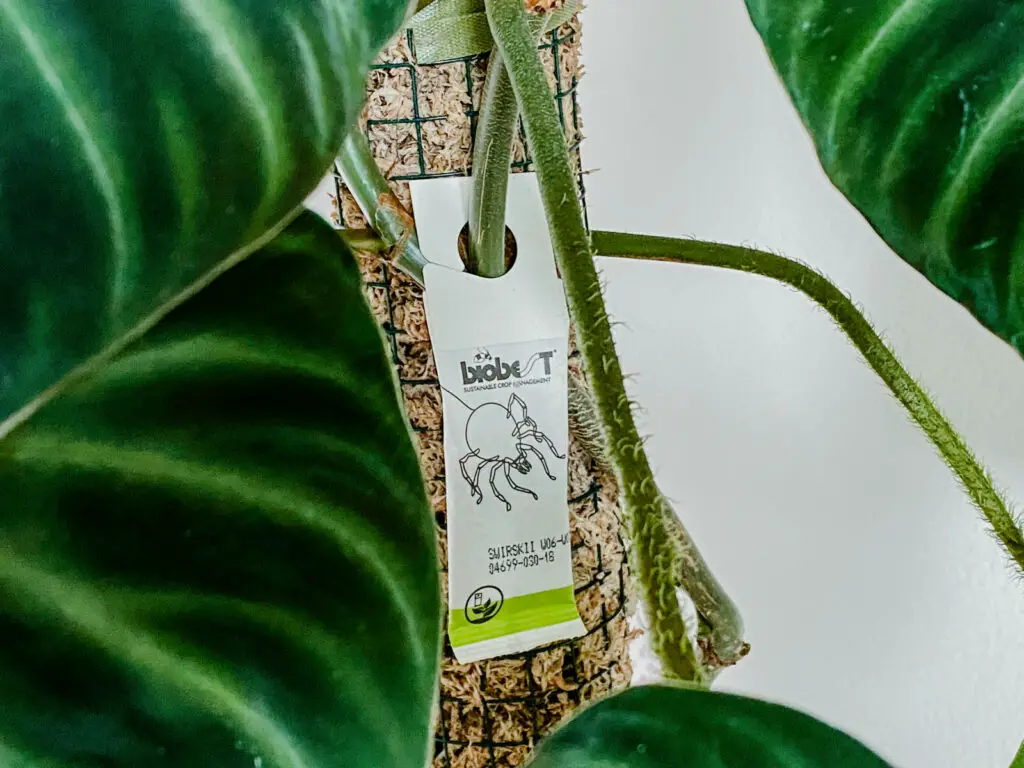
Watering
When I started getting into tropical plants, especially Calatheas, I saw a lot of advice about how many houseplants HATE tap water. But some of the alternatives weren’t so sustainable. One suggestion was to use distilled water, but I didn’t agree with buying water in containers just for plants. Another way to filter water. But water filters also create waste and where we live, the water from the tap is perfectly good to drink, so we didn’t need one.
But don’t fret – there are also some sustainable ways to water your plants that can also give them some additional nutrients.
One of the best options is to collect rainwater to use for watering your plants. However, you can also use the water that you use to boil eggs and vegetables (after letting it cool, of course) – which has the added benefit that it also gives the plants some additional nutrients that they need.
Sustainable Fertilizers & Plant Food
Fertilizing your plants sustainably means avoiding chemical fertilizers which often contain harmful pollutants.
As I mentioned above already, using leftover water from boiling eggs or vegetables can be a great solution for reusing water and also giving your plants some extra nutrients. Something else you can add to your soil as fertilizer is used coffee grounds.
If you’re someone who likes to make their own soil mix, something you can do when you are mixing soil is to add worm castings to your soil mix. This is a fantastic natural fertilizer.
And for the pet owners:
If you have a freshwater fish tank, another great way to water and fertilize your plants is to use the water from the tank when you are cleaning out your fish.
If like us, you have rabbits, you can soak their droppings in water until they are fully broken up, to make a kind of “tea” which is also a great fertilizer.
FAQs in Relation to How Sustainable Are Houseplants?
Do houseplants reduce your carbon footprint?
Houseplants can help reduce your carbon footprint, although their impact may be relatively small compared to other actions you can take to reduce your environmental impact. But if you use humidifiers, growlights and heating to grow the plants, you may actually be using more energy.
Overall, while houseplants may not have a huge impact on your carbon footprint, they can be a nice addition to a sustainable lifestyle and can help contribute to a healthier indoor environment.
What science says about the positive effects of Houseplants
Studies have revealed that keeping houseplants can be beneficial for one’s emotional and physical wellbeing. Studies suggest that having plants around can reduce anxiety, enhance air quality, inspire creativity and productivity, as well as facilitate healing. Plants also provide natural beauty which can lift moods and create a more calming environment in the home or office. Furthermore, plants are known to reduce carbon dioxide concentrations in the air while simultaneously increasing oxygen levels. Finally, some research suggests that interacting with plants may lead to improved psychological well-being as well as increased empathy towards others.
Conclusion
Considering their environmental impact, houseplants can be an excellent way to add colour and life to our homes – but only if we shop sustainably and use eco-friendly practices when caring for them. By understanding plant miles, opting for plastic-free pot alternatives and sustainable soil options, as well as shopping sustainably for houseplants, we can ensure that these beautiful additions to our home are enjoyed in an eco-friendly manner. By embracing sustainable practices for caring for your plants, you can enjoy them with the added assurance that you are doing what is best for the environment.
Save This Post

